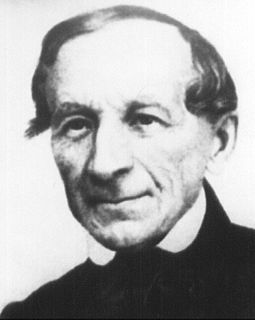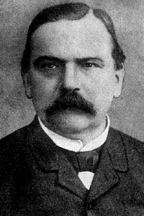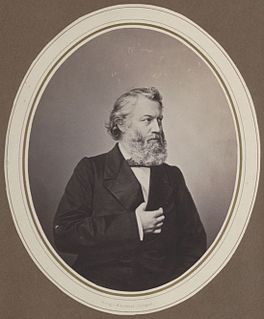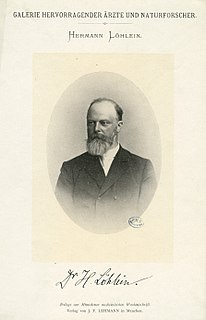
Heinrich Fritsch (5 December 1844 – 12 May 1915) was a German gynecologist and obstetrician who was a native of Halle an der Saale.
He studied medicine at the Universities of Tübingen, Würzburg and Halle. He became a member of Suevia Tübingen (1865) and the Corps Guestphalia Halle (1866). At the University of Halle he earned his medical doctorate in 1869. Afterwards he remained at Halle as an assistant at the clinic of obstetrics under Robert Michaelis von Olshausen (1835-1915). In 1877 he became an associate professor, and in 1882 was a professor and director of the obstetrical clinic at Breslau. From 1893 to 1910 he was a professor at the University of Bonn.

The University of Tübingen, officially the Eberhard Karls University of Tübingen, is a public research university located in the city of Tübingen, Baden-Württemberg, Germany.

The Julius Maximilian University of Würzburg is a public research university in Würzburg, Germany. The University of Würzburg is one of the oldest institutions of higher learning in Germany, having been founded in 1402. The university initially had a brief run and was closed in 1415. It was reopened in 1582 on the initiative of Julius Echter von Mespelbrunn. Today, the university is named for Julius Echter von Mespelbrunn and Maximilian Joseph.

The Corps Guestphalia Hall is a fraternity affiliate of the Kösen Senior Convents Association (KSCV), where it is the oldest one. The Guestphalia Halle corps has always stood for Fencing and Couleur (color). Presently it once again located in Halle (Saale) and belongs to the Green Circle. The Corps members are called Hallenser Westfalen.
Fritsch was a highly regarded surgeon and teacher, who is credited for training an entire generation of acclaimed gynecologists, that included physicians such as Hermann Johannes Pfannenstiel (1862-1909). In 1894 he provided an early description of "Asherman's syndrome", and his name is associated with "Fritsch's manipulation", an obstetric compression technique used for controlling bleeding.
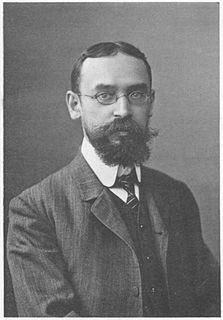
Hermann Johannes Pfannenstiel was a German gynecologist born in Berlin.

Asherman's syndrome (AS), which is also referred to as intrauterine adhesions (IUA) or intrauterine synechiae, is an acquired uterine condition that occurs when scar tissue (adhesions) form inside the uterus and/or the cervix. It is characterized by variable scarring inside the uterine cavity, where in many cases the front and back walls of the uterus stick to one another. AS can be the cause of menstrual disturbances, infertility, and placental abnormalities. Although the first case of intrauterine adhesion was published in 1894 by Heinrich Fritsch, it was only after 54 years that a full description of Asherman syndrome was carried out by Israeli gynecologist Joseph Asherman. A number of other terms have been used to describe the condition and related conditions including: uterine/cervical atresia, traumatic uterine atrophy, sclerotic endometrium, and endometrial sclerosis.
In 1877, with Hermann Fehling (1847-1925), he founded the gynecological journal Zentralblatt für Gynäkologie.

Hermann Johannes Karl Fehling was a German obstetrician and gynecologist who was a native of Stuttgart. He was the son of the chemist Hermann von Fehling (1811-1885).









